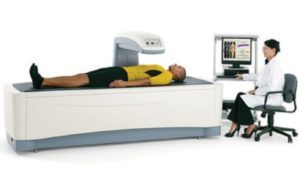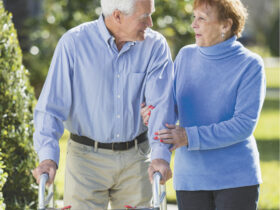 For most of us, as we age, some amount of bone loss will occur. That leaves many people with questions about what tests are available to check for bone loss, and when should testing for bone loss begin?
For most of us, as we age, some amount of bone loss will occur. That leaves many people with questions about what tests are available to check for bone loss, and when should testing for bone loss begin?
Testing for Bone Loss
A bone density test is the only test that can diagnose osteopenia/osteoporosis. The National Osteoporosis Foundation (NOF) recommends a bone density test of the hip and spine by a central DXA machine to diagnose osteoporosis. DXA stands for dual energy x-ray absorptiometry.
A bone density test tells you if you have normal bone density, low bone density (osteopenia) or osteoporosis. The lower your bone density, the greater your risk of breaking a bone. A bone density test can help you and your healthcare provider:
• learn if you have weak bones or osteoporosis before you break a bone
• predict your chance of breaking a bone in the future
• see if your bone density is improving, getting worse or staying the same
• find out how well an osteoporosis medicine is working
• let you know if you have osteoporosis after you break a bone
When to test
There are several criteria that can be used to determine when you should have a bone density test. The NOF recommends that you have a bone density test if:
• you are a woman age 65 or older
• you are a man age 70 or older
• you break a bone after age 50
• you are a woman of menopausal age with risk factors
• you are a postmenopausal woman under age 65 with risk factors
• you are a man age 50-69 with risk factors
A bone density test may also be necessary if you have any of the following:
• an X-ray of your spine showing a break or bone loss in your spine
• back pain with a possible break in your spine
• height loss of ½ inch or more within one year
• total height loss of 1½ inches from your original height
Types of Tests
Central DXA
A bone density test of the hip and spine using a central DXA machine. It is the only testing that can accurately diagnose osteoporosis.
Screening Tests
Also called peripheral tests, screening tests measure bone density in the lower arm, wrist, finger or heel.
The types of peripheral tests are:
• pDXA (peripheral dual energy x-ray absorptiometry)
• QUS (quantitative ultrasound)
• pQCT (peripheral quantitative computed tomography)
Screening tests can help identify people who are most likely to benefit from further bone density testing. They are also useful when a central DXA is not available. Screening tests cannot accurately diagnose osteoporosis and they should not be used to see how well an osteoporosis medicine is working.
What do you need and how often should a test be done?
In order to have a Bone Density test done, you will need a referral from a physician. With most types of bone density tests, a person remains fully dressed, but you do need to make sure no buttons or zippers are in the way of the area to be scanned. The test usually takes less than 15 minutes. Bone density tests are non-invasive and painless. This means that no needles or instruments are placed through the skin or body. A central DXA uses very little radiation. You are actually exposed to 10–15 times more radiation when you fly roundtrip between New York and San Francisco.
After your initial test, follow up testing is recommended every 2 years.
Testing Results
Your bone density test results are reported using T-scores. A T-score shows how much your bone density is higher or lower than the bone density of a healthy 30-year old adult. A healthcare provider looks at the lowest T-score to diagnosis osteoporosis.
What Your T-score Means. According to the World Health Organization (WHO):
• A T-score of -1.0 or above is normal bone density. Examples are 0.9, 0 and -0.9.
• A T-score between -1.0 and -2.5 means you have low bone density or osteopenia. Examples are T-scores of -1.1, -1.6 and -2.4.
• A T-score of -2.5 or below is a diagnosis of osteoporosis. Examples are T-scores of -2.6, -3.3 and -3.9.
• The lower a person’s T-score, the lower the bone density. A T-score of -1.0 is lower than a T-score of 0.5 and a T-score of -3.5 is lower than a T-score of -3.0.
Your test results also provide a fracture risk assessment, know as FRAX, which is an estimation of the probability that you will break a bone in the next ten years.
Bonita Community Health Centers imaging department uses the latest technology available to ensure you are getting the most accurate results from your bone density test. For more information or to schedule an appointment, please call (239) 949-6112.









